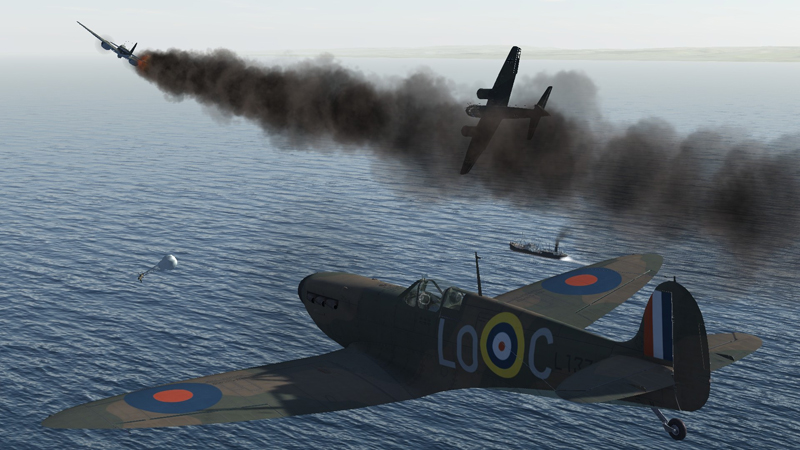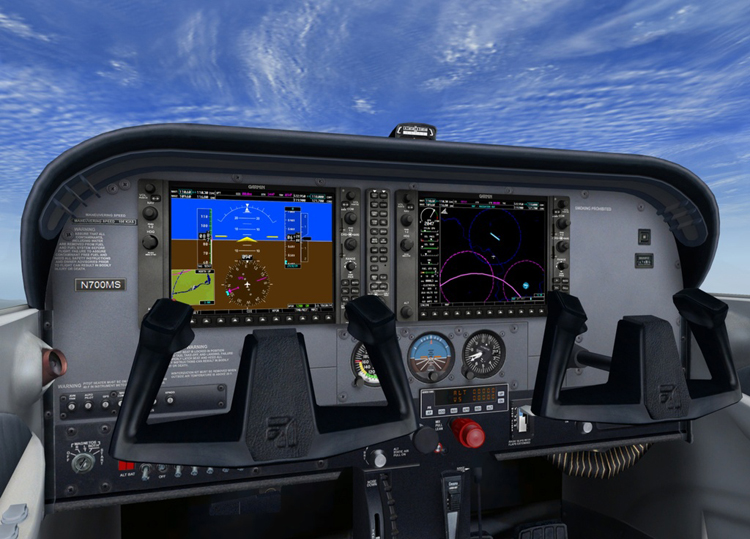Game Features
Representational flight simulators fall into two general categories: civilian and military. Civilian flight sims don’t include aerial combat; they’re mostly about the way the aircraft looks and performs, and so are often quite realistic. Military flight sims have to be simplified for reasons we’ll look at later, but they offer exciting physical and tactical challenges. Fantasy flight simulators can be about all kinds of crazy things, such as flying on a dragon.
Driving simulators also tend to fall into two major categories: organized racing and imaginary racing. Organized racing simulators try to reproduce the experience of driving a racing car or motorcycle in an existing racing class, such as IndyCar, NASCAR, or AMA Motocross. (To use the official name and indicia of any of these racing organizations, you will need to get a license. See the section “Intellectual Property Rights,” later in this e-book.) Imaginary racing games are just that: games about racing in imaginary situations, driving madly through cities or the countryside or even fantasy environments—kart racing games fall into this category.
In addition to racing, many games implement driving as a part of a wider variety of activities. First-person shooters often include combat vehicles as well, and of course cars are central to the Grand Theft Auto series. These vehicles are seldom represented accurately, because the player is less concerned with their driving characteristics and more with tactical needs.
The players themselves also fall into two categories. The purists demand highly accurate simulations of real vehicles with all their quirks and limitations; if a purist forgets to retract the airplane’s flaps after takeoff, he wants those flaps to be damaged by excessive airspeed and to be stuck in the down position with appropriate consequences for the plane’s handling characteristics. On the other hand, casual players don’t care about the details as long as they can fly or drive around, preferably fast, and maybe even shoot at things or do tricks.
The Player’s Role
Naturally the player’s primary role in a vehicle simulation is that of its pilot or driver. However, the player may take on other roles in different gameplay modes. For example, if you’re going to simulate larger aircraft such as bombers or two-seat fighters, you’ll have to decide how you want to handle the varying roles available. In LucasArts’ World War II simulator Their Finest Hour, the player can play any of the waist and tail gun positions of the Junkers Ju 88 bomber while leaving the plane on autopilot, or she can set the guns to fire automatically at any target that comes into view. To drop the bombs, however, she has to take over the bombardier’s position personally. Three-Sixty Pacific’s game Megafortress required the player to manage no fewer than five different stations: pilot, copilot, navigator, electronic warfare specialist, and offensive weapons officer. Each station had its own instrument panel and responsibilities, and the player had to move constantly from one to another to check on conditions and respond to emergencies. At times when the player was away from the pilot’s seat, the plane flew on autopilot toward the next waypoint.
In racing-oriented driving games, the player’s role is that of a racing driver most of the time, but the more serious simulations, such as the F1 series, also allow the player to be a mechanic, modifying the angle of the airfoils, changing tires to compensate for weather conditions, and so on.
Competition Modes
A few vehicle simulations, such as the classic Microsoft Flight Simulator, aren’t really games because they don’t offer the player a goal, apart from learning to control the vehicle. They don’t have any rules other than the laws of physics. Most vehicle simulations, however, offer driving or flying within a competitive context, either a race or a battle of some kind.
The competition modes of military flight simulators resemble those of first- person shooters: single-player modes against artificial opponents, multiplayer death matches (every player for himself), and team-based play. Civilian flight simulators usually offer only a single-player mode, although they sometimes also allow races and follow-my-lead competitions. Driving simulators are generally single-player games or multiplayer races and are seldom team-based.
Tip
Players like to get started right away. Include a quick-play mode that lets them make a few simple choices (track, number of laps, and so on) and start driving immediately. A feature that chooses a vehicle automatically and track at random is also popular.
Both military flight simulators and organized race-driving simulators often include a career mode; in this mode the player creates a pilot or driver and follows his career (trying not to get him killed, of course), racking up victories and collecting performance statistics.
These games also include campaign modes. In a driving game’s campaign mode, the player, as a race driver, tries to win in a real racing circuit, collecting points according to the official rules of the circuit.
In military flight simulators, the campaign mode can work in a variety of ways. In one type of campaign mode, the game offers a series of missions, one at a time, in which the player must achieve a specified victory condition before going on to the next mission; completing all the missions constitutes winning the campaign. In another type of campaign mode, the player can play all the missions in order, whether she meets the mission objectives or not. However, if she plays through all of them without achieving enough mission objectives, she loses the campaign. The better she fights on any given occasion, the more chance she has of winning the war in the long run, but she can still afford to lose the occasional battle. This more closely approximates what happens in a real war, but as the designer, you must provide clear feedback to the player about how she’s doing as she goes along.
Gameplay and Victory Conditions
The primary challenge in playing any vehicle simulator is in controlling the vehicle: learning to speed it up, slow it down, and steer it without crashing it into something. Without being able to feel the g-forces on his body, the player has to depend on other cues to determine how fast he is going and how hard he is braking.
In the case of flight simulators, you can make this challenge simple, requiring the player to know almost nothing about aerodynamics, or extremely difficult, accurately modeling the behavior of an airplane. Unlike a car, airplanes respond rather slowly to their controls, often beginning to execute a maneuver a few seconds after the player has first moved the yoke or joystick. Players used to driving a car will tend to overcontrol the plane when they find that it doesn’t respond immediately. If you want to present a realistic challenge, you can model this problem accurately; to keep the game easy, treat the plane more like a car.
Military Flight Sims
In military flight simulators, the player must not only fly the aircraft but also achieve the mission’s objectives, usually attacking enemy aircraft and ground installations. Modern air-to-air combat, conducted with long-range guided missiles and often directed by Airborne Warning and Control System (AWACS) planes, is a rather cerebral exercise. Hence the continuing popularity of World War I and II flight simulators, such as Il-2 Sturmovik: Cliffs of Dover (see Figure 1). These let the players dogfight, twisting and turning through the sky, hiding behind clouds, diving out of the sun, and blasting away with bullets at short range. It’s a much more action-packed experience.
Figure 1 Il-2 Sturmovik: Cliffs of Dover
The role of the aircraft being simulated defines the gameplay for military flight simulators. Fighter planes are designed primarily to attack enemy aircraft and to protect friendly aircraft and ground units from air attacks; attack planes are designed to attack moving ground targets; bombers are designed to attack stationary ones. Most military flight simulators offer a series of missions, often with primary and secondary objectives such that achieving either or both of them constitutes victory. Being killed or having the player’s plane shot down constitutes a loss. However, you don’t have to establish binary victory conditions; you can allow for partial success by rating the accomplishments of a mission according to the number of objectives achieved, the length of time it took, and the amount of damage sustained by the aircraft, for instance. You can also assign bonus points for a swift and safe return.
Civilian Flight Sims
Civilian flight simulators, such as the excellent Microsoft Flight Simulator (see Figure 2), seldom include any victory conditions unless they implement racing or tests of flying ability. Many of them simply let the player fly and try different things with the aircraft rather than present her with a specific mission to accomplish. However, civilian flight sims can present a wide variety of challenges: flying at night; flying in rain, fog, or strong winds; and using visual flight rules or instrument flight rules. Landing smoothly and safely, particularly in adverse weather conditions, is always the most dangerous moment in a flight and usually represents the toughest challenge that a civilian flight simulator offers. Most provide an auto-land function that simply returns the plane to the ground without the player having to perform the landing.
Figure 2 An instrument panel in Microsoft Flight Simulator X. This is a game for people who take piloting seriously.
Driving Sims
Organized racing simulations, like sports games, take their gameplay from the real thing. The primary challenge is to win races without crashing (which can either put the player out of the race or simply cost him time, depending on the accuracy of the simulation). This may be just as complicated as real racing, including such details as refueling, managing the tires, and compensating for the weather. Some games also include an economic element: The player wins prize money for doing well in a race, and the prize money enables him to buy better equipment. This produces positive feedback that must be counteracted to balance the game; as the player improves, his artificial opponents must also improve to offer him a worthy challenge.
In more arcadelike driving games, the games often include other challenges such as running other drivers off the road, gathering up collectibles or powerups, weaving through hoops or cones, shooting at enemies or dropping devices to delay them, and so on.
Co-op Vehicle Sims
Thanks to the convenience of local networking, it’s now possible for players to play cooperatively in the different seats of a multiseat vehicle. Familiar real-world examples of this are bombers and tanks; the Battlefield series allows players to play different roles in some of its vehicles. Quite a number of combat games, such as Halo, offer two-person vehicles in which one is the driver and another the gunner. However, Halo is a first-person shooter, not a vehicle simulation; driving is a secondary gameplay mode and doesn’t require much interaction between the players.
Artemis Spaceship Bridge Simulator provides a more sophisticated example. It’s a co-op local multiplayer networked game for the PC—several PCs, in fact. The players, any number from two to six, operate different stations on the bridge of a starship very similar to the Enterprise from Star Trek. Each player’s PC shows the controls appropriate for his own position. One player is the captain, and his machine acts as the server for the others, running the main simulation. Because the players cannot see what is on each others’ machines, they have to communicate by giving orders and status reports to one another verbally. Role-playing is not just an option in the game; it is required by the game’s design. But this is not a role-playing game in the usual sense of the world: It really is a vehicle simulation, although the emphasis is on ship-to-ship combat rather than steering.


